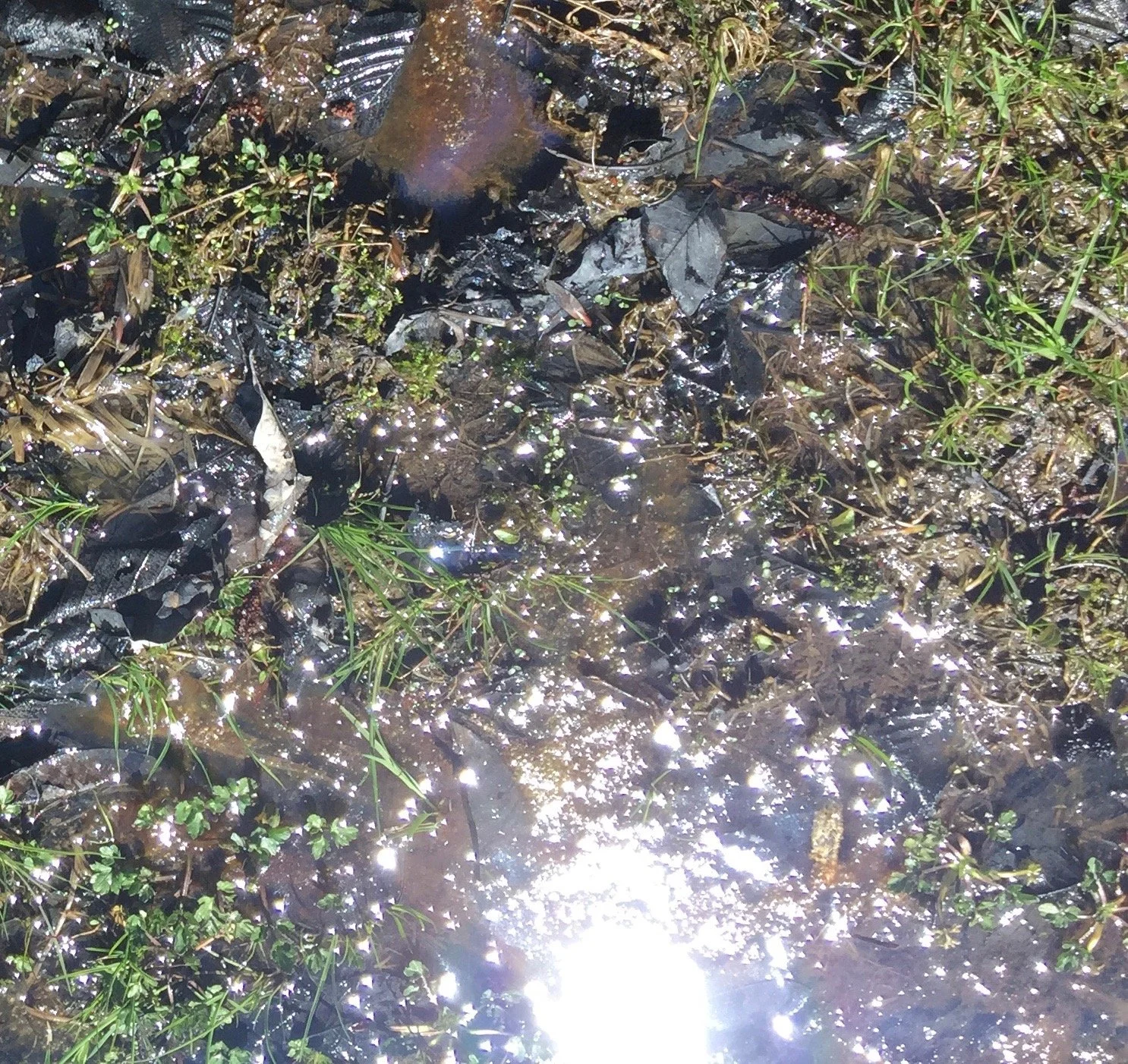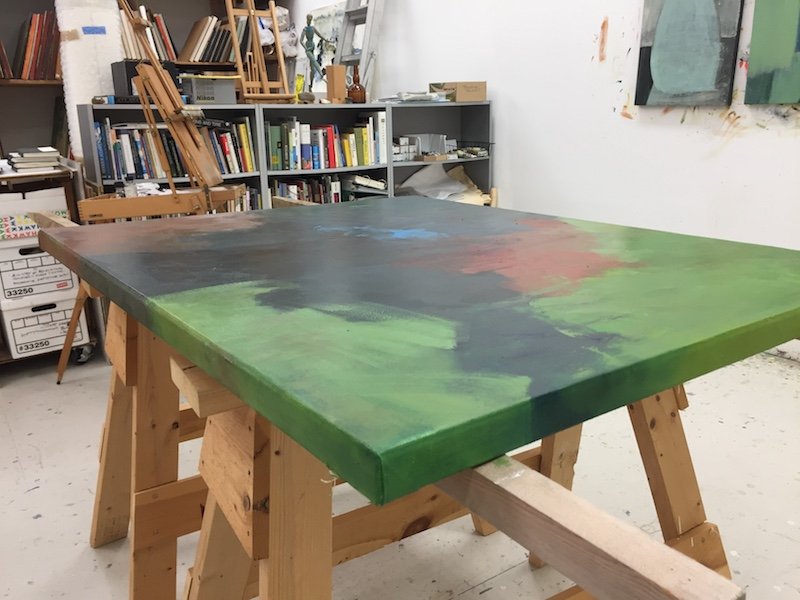Nature and Painting
The month of May finds me as much in the garden as in the studio, and one of the absolute pleasures of being in two places at once has been returning to work on a painting that I made in 1993. It's sparked a conversation entirely in my head, about low watery places and my need to paint them. Even the names - bottomland and bog - are mysterious. They belong to Nature as personified in the ancient Greek concept of Physis. Here is how Philostratus the Younger, a Greek philosopher and teacher who lived in the 3rd century A.D., described a painting he'd seen. He wrote "No doubt you see the grove around the spring, the work of wise Nature (Physis), I believe; for Nature is sufficient for all she desires, and has no need of art; indeed it is she who is the origin of arts themselves."
For Nature is sufficient for all she desires, and has no need of art . . . . I stand before a canvas humbled by this thought, but ready to give form to what I've seen. Because it's a fact that a painting transmits information, and I paint to share my experience with you. A landscape painting about our lived experience, brings order to the raw materials of sight, sound, taste, touch and smell. I sense, therefore I paint.
The painting I've been working on with such pleasure is Bog Portrait. It was inspired by my frequent hikes in Washington County back when I was just getting to know Maine. Though the face of the painting was finished long ago, I've now extended the image around the edges for a more complete immersion in the bog. My memories of the black bog water, the accumulations of iron in the water. and the intense greens of foliage at the margins, found their way into the painting, and I'm pretty pleased that even though the oil paints I mix now are different from the ones I used in 1993, I was able to match the color and carry the brush marks around the edges, thus completing the painting and the experience it mirrors.
Bog Portrait, Oil on Canvas, 50 x 40 Inches, 1993. Private Collection.
A recent photo of my wetland here in Lincolnville, was not the source for, but reflects the painting above, and that, in turn, records my first experience walking the boardwalk across a bog at Quoddy Head State Park. Seeing the painting flat on the sawhorses as I painted the edges, makes it pretty clear that here is a bog painting - and that stepping on it would damage it, just as stepping onto a peat bog will damage the layers of sphagnum moss that have taken centuries to build.


